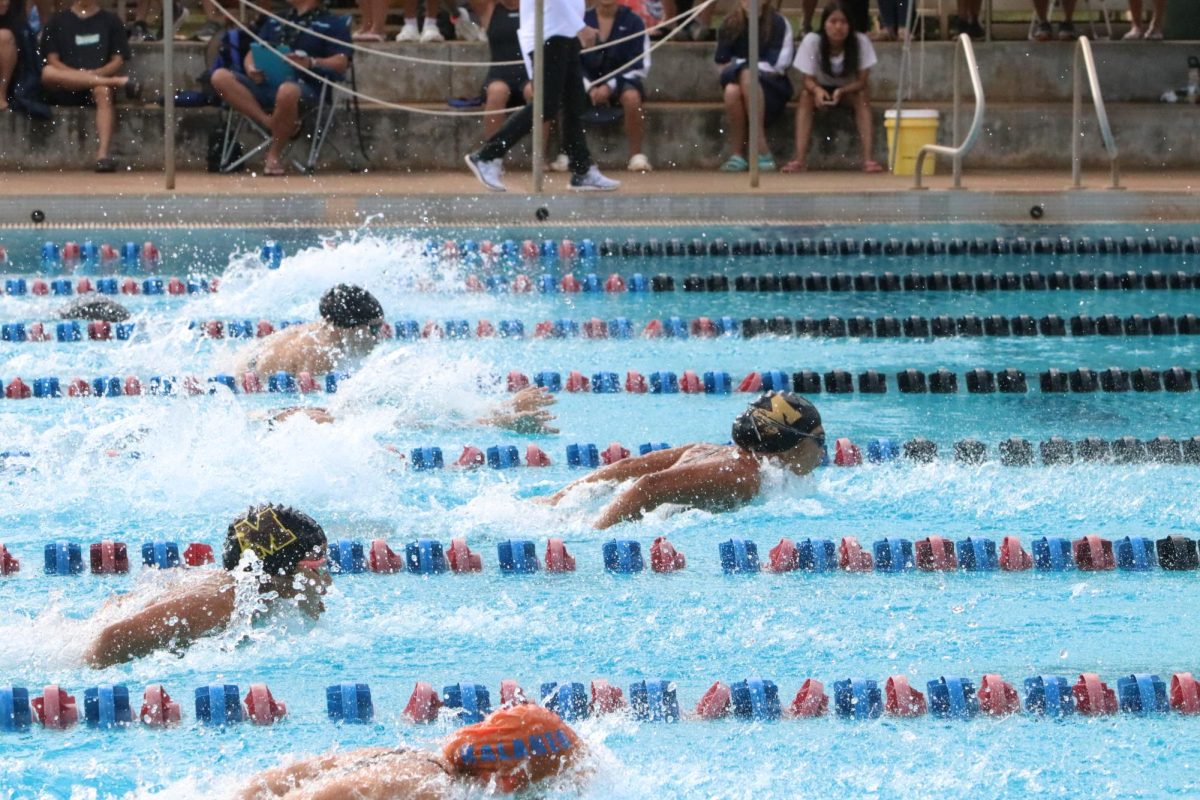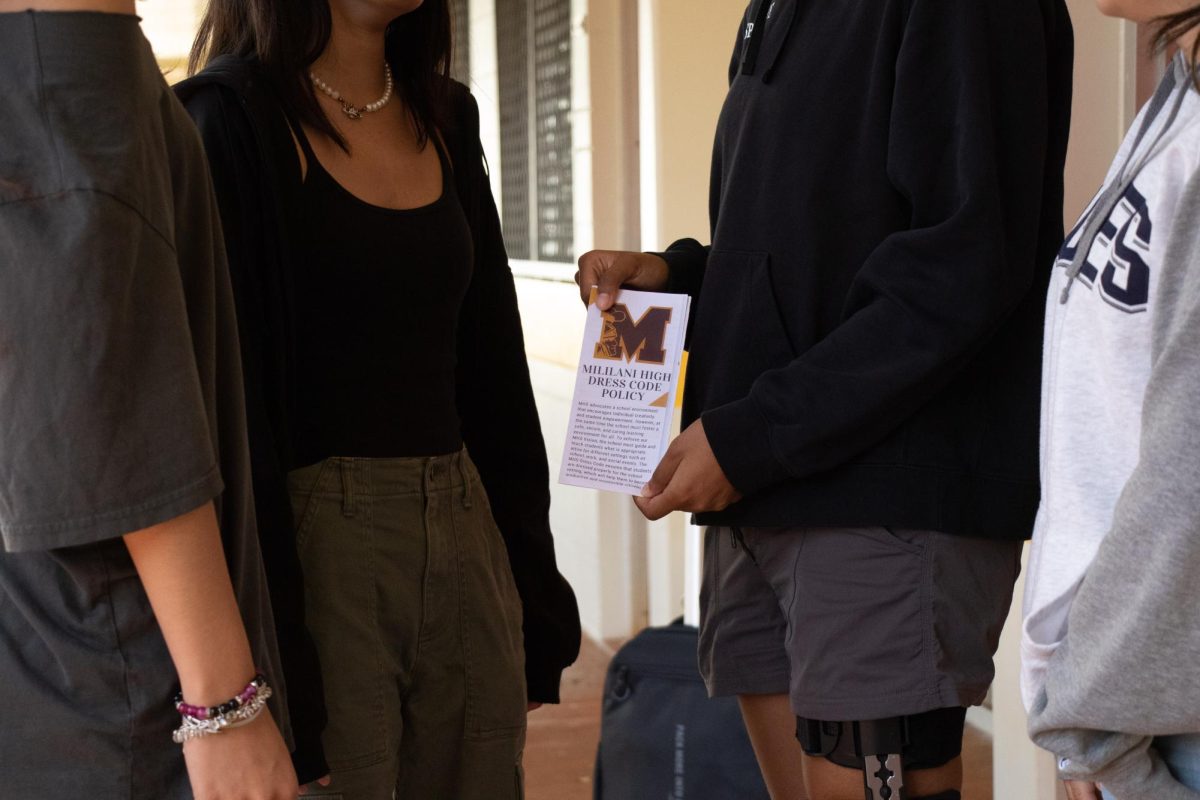Confusion With New Lunch Payment System Causes $25K Debt
March 14, 2019
On May 7, 2018 the state of Hawai’i launched eTrition, a web based software that allows schools to manage their food program, after the contract with SchoolCafe ended. This new program is meant to keep track of students’ lunch account balances, allowing parents to have more control by making an account online. Through several factors from the implementation and transition to the new process and system and the alert system format changing, a $25,000 debt from unpaid school lunches has incurred. If not paid at the end of the 2018-2019 school year, the school is required to pay off the student debts.
“With that new system the idea was that parents would then be able to make deposits online, check balances online and take over ownership of their children’s lunch accounts. Which would then ease the burden on when do those letters come home, when do those phone calls come home, that type of thing. And to make it all a perfect storm, at the same time we ran into a shortage of personnel in our kitchen and that’s kind of statewide — everybody’s having trouble having enough personnel. So that person who is called the eTrition person is supposed to keep track of, you know, scanning and keep track of the accounts and taking the money and deposit it and do all of those wonderful things. But we don’t have that one person because we sort of feel like it’s more critical to produce the food that students are going to eat,” said Vice Principal Andrea Moore.
With the old system, students or parents would have to bring either cash or checks to the front office to deposit it into their account. Students also had a hard time checking their balance, only being made aware that they had a debt after the fact, rather than when their account was running out of money. With the new system, parents are able to check their child’s balance, pay online and even set reminders for when the balance gets too low. “The great thing about the new system is that you can pay with a credit card, you don’t even have to interface with the office, you can do it at two in the morning, you know, whenever you want. The bad thing is the school’s involvement in the process is less so therefore our ability to check in and everything and the students getting that check in from the school is not quite the same. And so we have to retool and we have to figure out how do we make people aware of their lunch balances and get them to check their lunch balances,” said Principal Fred Murphy.
School Food Services has a policy that if a student has a debt over $26.95 the school is not supposed to feed them. However, as a public school, MHS has not enforced this, leading to the substantial debt. “About two years ago the policy for secondary students was, ‘Hey, if you run out of money in your account we just wouldn’t feed you,’ and the Board of Education had a policy that basically said for elementary kids, ‘We’re going to feed them everyday, we’re going to allow them to accumulate debt.’ But the State of Hawaii changed its policy and said, ‘We don’t ever want a child to go hungry.’ And I understand the intent, but what has occurred is suddenly secondary schools have students with large debts that are being accumulated and sometimes students will scan for a second meal and feed their friends and that second meal is much more expensive than the first meal and their parents didn’t know. And there’s certain liberties that secondary students have to be able to buy lunches for others and that kind of stuff that you don’t have in elementary school, so we have some other larger systems to work out. The intent of the Board of Education is well received, ‘Don’t let anybody go without a meal even if they have a debt.’ But the ramifications are, and this is in American culture too, people run up debt very quickly,” said Murphy. Moore added, “It’s just a lot of things added up in a big hurry and conversely they’re going down rather quickly as we’re letting parents know ‘cause most parents are like, ‘Oh my goodness I did not realize,’” said Moore.
While the cafeteria is short handed, the front office is currently working to help rectify the situation. Individualized letters are currently being sent out to people with balances, as well as being followed up with phone calls. These efforts have already begun to show results, as although the list of students is long, balances have begun to be settled. “So the translation from the old to the new system, we did find some irregularities where there were duplicate numbers and some things at the at the beginning of the school year. So part of this is while we’re going through this system, if people think that our bill is inaccurate or whatever they should come in and talk to us and we can work together to rectify things because we may find that there are mistakes too as we’re moving from one system to another,” said Murphy.
It was originally assumed that the schools would no longer have to keep track of student lunch balances with this new system, as that responsibility would be transferred to parents. However, the current situation has made it clear that there still needs to be some form of reminder system in place. “Some schools are going to a system where every time the report card goes out we’re going to send the balance out with the report cards and mail that out — we’re talking about the mid-quarter and the regular report. So that’s a big hairy deal to have somebody print that out over here, somebody to print the report card out there, put them together, give them to the students; it sounds simple but (with) 2600, 2700 kids that becomes a little different and it’s a burden for whoever the individuals are that aren’t currently doing that. We’re thinking about ways that we can put that information out more regularly and I’m trying to work with the Department of Education to say, ‘Is there a way that computers can talk to one another so when I print out your report card, little information about your lunch balance and other things can just go in the corner.’”
Settling the account balance is a school obligation that, if gone unresolved, can restrict students’ participation in school events like prom and graduation. MHS is also beginning to be more aggressive in monitoring balances for missing dress code shorts and shirts, as well as unfulfilled Saturday detentions. For any questions or concerns related to a student’s lunch account or balance, the front office can be contacted for assistance. To make an account within the new system, go to www.ezschoolpay.com or to the school’s website at www.mililanihs.org under the “Cafeteria” tab.



